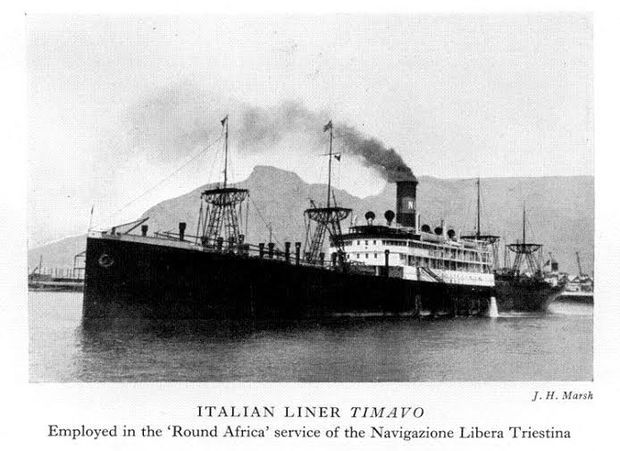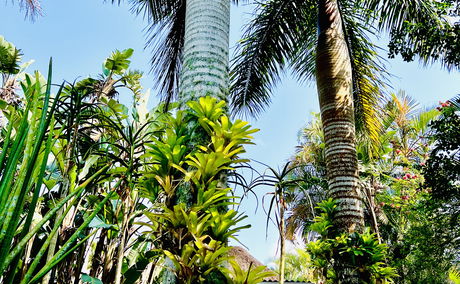St Lucia is not a destination built around ticking off attractions. It’s a place shaped by tides and wildlife, early mornings and quiet evenings — where the most memorable moments tend to unfold slowly rather than on demand. That’s why one of the most common questions we receive from guests planning a visit is also one of the most important: “How many nights should we stay?” The answer has less to do...
The SS Timavo: A Shipwreck Steeped in History and Legacy in St Lucia

Off the tranquil shores of St Lucia, KwaZulu-Natal, lies a story of war, escape, and survival that forever shaped the local landscape, both physically and historically. The tale of the SS Timavo, an Italian passenger liner that ran aground during World War II, is one of the most fascinating maritime episodes in South Africa’s coastal history.
The Origins of the SS Timavo
The SS Timavo was a 7,554-ton Italian passenger and cargo liner operated by the Lloyd Triestino shipping company. Built in the early 20th century (launched in 1920), the ship was designed for long-haul voyages across the Mediterranean and beyond. Named after the Timavo River in northeastern Italy, the vessel was part of Italy’s expanding maritime fleet during a time when global travel and trade by sea were booming.
By the 1930s, she was a well-known ship along trade and passenger routes, frequently navigating ports across Asia, Africa, and Europe. Her structure was sturdy and elegant, typical of the Italian ocean liners of that period, with fine detailing, wood-panelled interiors, and traditional porthole doors that would one day become relics in a very different setting.
The Dramatic Escape Attempt – June 1940
When Italy entered World War II on June 10, 1940, aligning with the Axis Powers, the geopolitical shockwaves reached all the way to Durban Harbour, where the SS Timavo was docked.
To avoid the imminent threat of capture by British-aligned South African forces, the Italian crew attempted a daring escape under the cover of darkness. Their destination: neutral Mozambique, just north along the East African coast.
On June 11, 1940, the ship slipped out of Durban under steam, heading northward. However, by morning, a South African reconnaissance aircraft spotted the ship near Leven Point, north of Cape Vidal, and ordered it to halt.
Rather than surrender the vessel, the captain ran the Timavo aground on purpose, beaching her on the rugged shoreline near what is now part of the iSimangaliso Wetland Park. The crew then fled inland, trying to reach Mozambique on foot, an arduous journey through wild, untamed terrain.
The shipwreck was reported, and in the following days, South African forces tracked down and arrested the crew.
The Aftermath and Salvage
The Timavo lay stranded and partially buried in the sand dunes of the St Lucia coast. Over time, nature began to reclaim her, waves broke her apart, the salty air rusted her frame, and her fittings were gradually scavenged by local salvagers and the South African authorities.
In the early 1940s, pieces of the wreck were salvaged and repurposed. One of the most remarkable examples of this can be found at Lidiko Lodge, a beautiful boutique lodge nestled in the heart of St Lucia village.
The original thatched building, one of the first residences in the area built in the late 1930s, incorporated doors and porthole features from the SS Timavo. Today, guests at Lidiko Lodge walk past these historical elements daily, unwittingly brushing against a piece of WWII history.
These relics are not just decorative, they're tangible links to a forgotten era, giving the lodge a unique blend of coastal charm and maritime mystique.
Lidiko Lodge: A Living Connection to the Timavo
Lidiko Lodge is perched on a ridge overlooking the iSimangaliso Wetland Park, a UNESCO World Heritage Site. Surrounded by natural beauty, it is a gateway to a wide range of adventures, from hippo and crocodile cruises to snorkelling in Cape Vidal.
But what sets the lodge apart is its connection to Timavo. The use of salvaged materials gives the property a distinct character, weaving global history into its very foundation. The salvaged porthole doors, in particular, serve as a subtle tribute to the past, blending seamlessly into the lodge’s warm, colonial-meets-coastal design.
Whether guests are aware of it or not, they are part of a continuing story—one that started with a ship fleeing wartime captivity and ended with a peaceful retreat that embraces heritage, nature, and storytelling.
Legacy and Historical Importance
While the SS Timavo is no longer visible on the shoreline, her legacy is deeply embedded in the cultural and historical fabric of St Lucia.
- Artefacts: Salvaged parts live on in homes, museums, and notably at Lidiko Lodge.
- Stories: Locals still recount tales passed down about the ship’s dramatic grounding and the Italian crew’s trek through the bush.
- Heritage: Her story offers a unique wartime perspective, revealing how global conflict reached even the quietest corners of southern Africa.
The saga of the SS Timavo is a vivid reminder of how history leaves its mark in unexpected places. What began as a desperate wartime escape ended up becoming a piece of St Lucia’s identity. Thanks to thoughtful preservation and storytelling, visitors today can encounter this chapter of the past, not in a museum, but in the very walls and doors of Lidiko Lodge.
So, the next time you visit St Lucia and stay at this charming lodge, take a moment to appreciate the craftsmanship of the old doors and remember the ship that brought them here.
Further Reading
A More Colourful Look at Nature’s Secret Calendar... Most travellers arrive in St Lucia expecting sunshine, sandy beaches, and safari adventures. But those who linger a little longer, who pause to watch the tide shift or listen to the night sounds from the forest, quickly realise something: this place moves to a rhythm far older and far richer than the four seasons printed on a calendar. St Lucia lives by nature’s seasons...
There are places in the world where nature seems to follow ordinary patterns, and others where it breaks them entirely. St Lucia, a small, coastal town wrapped in the embrace of the iSimangaliso Wetland Park belongs unmistakably to the latter. This is a landscape where ecosystems blend in improbable ways, where wildlife moves confidently between human spaces, and where the natural world still feels vast, unfiltered and astonishing. It is little wonder...





Share This Post